SEO Version
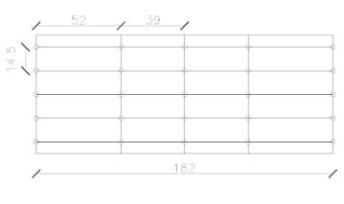
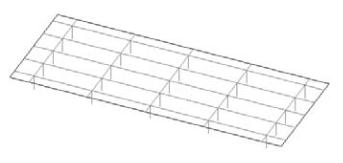
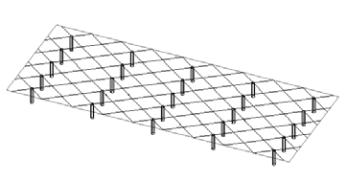
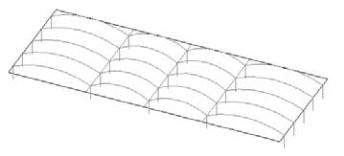
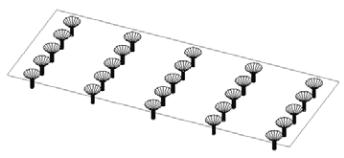
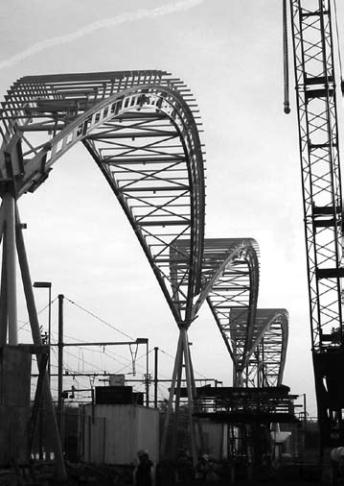
41
3.1 Study of the optimum structure.
Structure with a minimal weight.
An important key point in this project is the decision to design a structure combining
minimal weight with an optimal use of materials.
A first objective was the realisation of a cover with a minimum number of supports
in the construction area. Too many supports form obstacles on the platforms and
obstruct travelers’ overview. Since the overhead railway wiring requires supports
every 52/39/39/52m, it was mandatory to install supports at those distances as well.
The main bearing areas are located on the individual platforms and form a basic
design comprised of 25 supports within the area.
(fig. 1)
A second objectivewas the determination of the optimumstructure for the realisation
of this cover. Various different covering construction methods were taken into
consideration. The area requires a roof structure with a general height of no more
than 6.5 m measured above the columns. In this way, the total height of the cover
does not exceed the height of the old station building.
Discs shaped like three-dimensional trellises,
(fig. 2a)
membranes, and plates in rows
or in a grid
(fig. 2b)
, can be considered in a three-dimensional model.
Three-dimensional lattices haveproven tobequiteheavy andexpensive.Membranes
and discs are very appropriate in terms of weight, but prove unsatisfactory in other
respects. Moreover, the dimensions of the
lattices
do not lead to functional three-
dimensional structures.
Straight beams
(fig.3a)
(continuous massive beams or cell-bearing beams) or cabled
arch systems could be considered in a two-dimensional approach. Continuous
straight beams would be excessively heavy in this case, and even themost optimised
trellis would still be much heavier than bi-articulated parabolic arches.
(fig. 3b)
Also, a high number of joints and a wide variety of beams would be necessary.
Standardisation of the various beam sections would only increase their weight.
A hyper static lattice truss with four bays on five supports would minimise this
disadvantage but cause thermal expansion problems.
The slenderness l/h (Lenght/Height) of the largest span is 6 or 8 (39 m/6.5 m = 6
and 52m/6.5 m = 8), respectively. In this case, the weight of iso-statically optimised
lattice-trusses is 1.55 to 1.6 times heavier than that of arches with the same profile.
Arches are nearly as flexible as optimised lattice-trusses under evenly distributed
vertical loads, and their form can easily adapt to thermal movement without causing
important additional strains. They can be secured at their bases, closely joined
together, and easily supported by inclined columns. They can support tensile and
pressure stresses equally well.
The production of arches is less labour-intensive than the production of optimised
lattice-trusses. Their area to be painted is also smaller. This is an important cost-
saving aspect. Maintenance is also simpler.
The main canopies consist of pairs of inclined I-beam arches with a variable height
(ranging from 700 mm at their bases to 500 mm at the centre of the canopy), joined
together every 3.25 m to avoid buckling and allow them to function under maximal
tension tolerance levels.
fg. 3b
fg. 1
fg. 2a
fg. 2b
fg. 3a
Powered by FlippingBook Publisher

